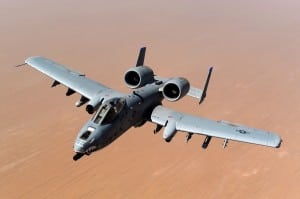
The U.S. Air Force, which recently launched a competition to replace the wings on some of its aging A-10 Thunderbolt II close-air-support aircraft, plans to pick a winning bidder and award a contract in spring 2019, a service spokeswoman said May 30.The Air Force released a request for proposals May 25, setting an Aug. 23 deadline for bids. The service had previously indicated that it would issue the RFP sometime in the current quarter (Defense Daily, April 12). Boeing, which has…

 By
By 











